The particle P shown in the figure has a mass m and a charge -q. Each horizontal plate has a surface area A potential difference V=n(mgε0A2qc) should be applied to the combination to hold the particle p in equilibrium then find the value of n.
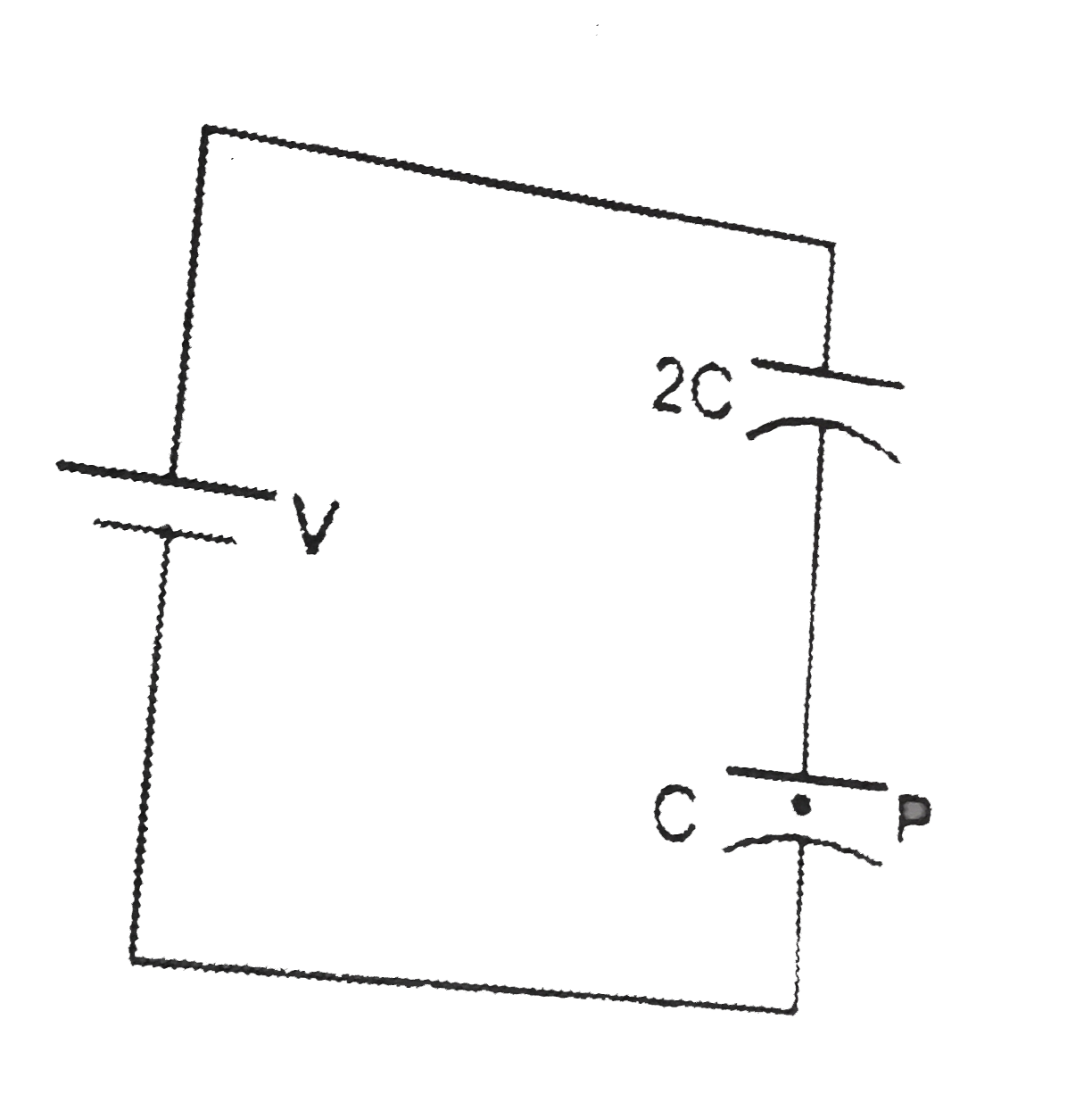
The correct Answer is:3
Step by step video, text & image solution for The particle P shown in the figure has a mass m and a charge -q. Each horizontal plate has a surface area A potential difference V=n((mg epsilon_(0)A)/(2qc)) should be applied to the combination to hold the particle p in equilibrium then find the value of n. by Physics experts to help you in doubts & scoring excellent marks in Class 12 exams.
Updated on:21/07/2023Topper's Solved these Questions
- CAPACITANCEBOOK - RESONANCECHAPTER - CAPACITANCEEXERCISE - Exercise - 3
26 Videos
- CAPACITANCEBOOK - RESONANCECHAPTER - CAPACITANCEEXERCISE - High Level Problems
16 Videos
- CAPACITANCEBOOK - RESONANCECHAPTER - CAPACITANCEEXERCISE - Exercise - 1
79 Videos
- ATOMIC PHYSICSBOOK - RESONANCECHAPTER - ATOMIC PHYSICSEXERCISE - Advanved level problems
17 Videos
- COMMUNICATION SYSTEMSBOOK - RESONANCECHAPTER - COMMUNICATION SYSTEMSEXERCISE - Exercise 3
13 Videos
Similar Questions
The particle P shown has amass of 10mg and a charge of−0.01μC.Each plate has a surface area
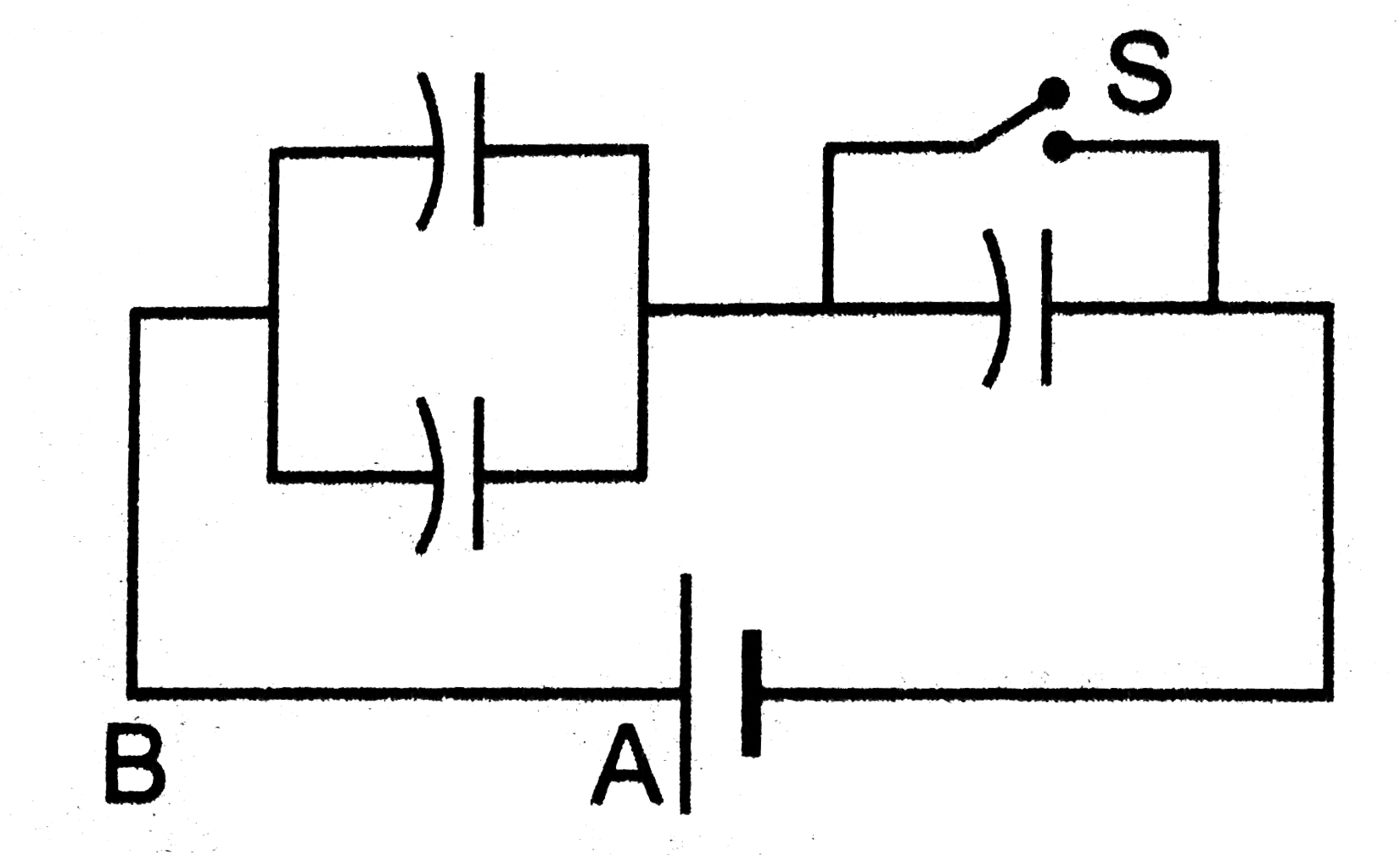
View SolutionLower plate of a parallel plate capacitor is fixed on a horizontal insulating surface. The upper plate is suspended above it using on elastic cord of force constant K. The upper plate has negligible mass and area of each plate is A. When there is no charge on the plates the equilibrium separation between them is d. When a potential difference = V is applied between the plates the equilibrium separation changes to x.
(a) Calculate V as a function of x.
(b) Find the value of x for which V is maximum. Calculate the maximum value of V(=Vmax)
(c) What will happen if V>Vmax ?
(d) Plot a rough graph showing variation of equilibrium separation (x) with V
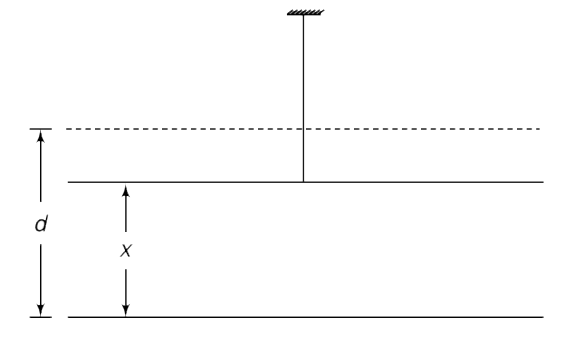
View Solution
Knowledge Check
The particle P shown in the figure has a mass of 10 mg and a charge of −0.01μC. Each plate has a surface area 10−2m2 on one side. What potential difference V should be applied to the combination to hold the particle P in equilibrium?
 A43mVB35mVC50mVD55mV
A43mVB35mVC50mVD55mVA sphere carrying a charge of Q having weight w falls under gravity between a pair of vertical plates at a distance of d from each other. When a potential difference V is applied between the plates the acceleration of sphere changes as shown in the figure, to along line BC. The value of Q is
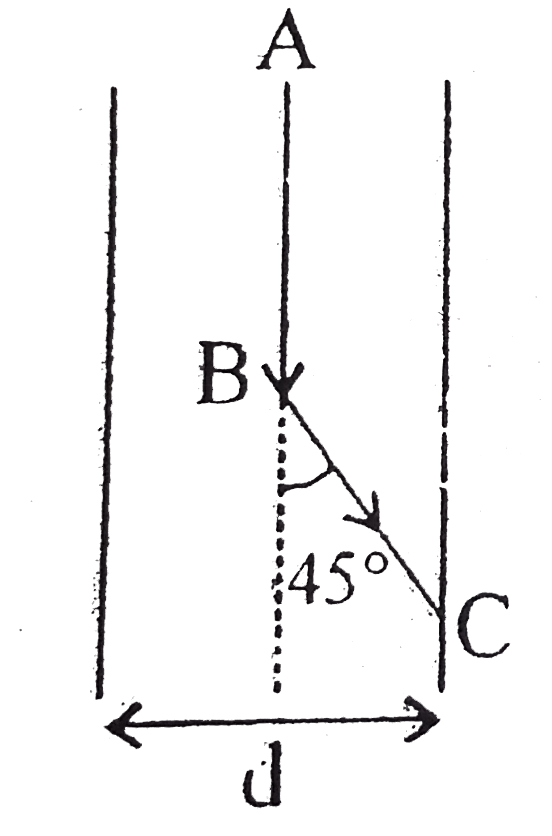 AwvBw2VCwdVD√2wdV
AwvBw2VCwdVD√2wdVEach of the two block shown in the figure has mass m. The pulley is smooth and the coefficient of friction for all surfaces in contact is μ. A constant horizontal force P applied in two cases shown in such a way that block A start just sliding then the value of minimum force P in case-I and case-II is :
 A2μmg,3μmgB3μmg,2μmgC4μmg,3μmgD3μmg,3μmg
A2μmg,3μmgB3μmg,2μmgC4μmg,3μmgD3μmg,3μmg
A particle having charge +q and mass m is approaching (head on) a free particle having mass M and charge 10 q. Initially the mass m is at large distance and has a velocity V0, whereas the other particle is at rest.
(a) Find the final velocity of the two particles when M=20 m.
(b) Find the final state of the two particles if M=m.

View Solution(a) Find the potential difference between the plates of a parallel plate capacitor of capacitance 5μF if a charge +800μC is placed on one plate and-200μC on another plate.
(b) The charege given to plate are as shown. The capacitance between the adjacent plates is C. find the charge on outer surface of plate 3, and potential difference between plate 1 and 2.
(c) If A is area of each plate and d is separation between adjacent plates, find the charge supplied by battery.
(d) Five idential capacitor plates each of area A are arranged such that adjacent plates are at a distance d apart. the plates are connected to a source of emf V as shown. what is the magnitude and nature of charge on plates 1 and 3 respectively?
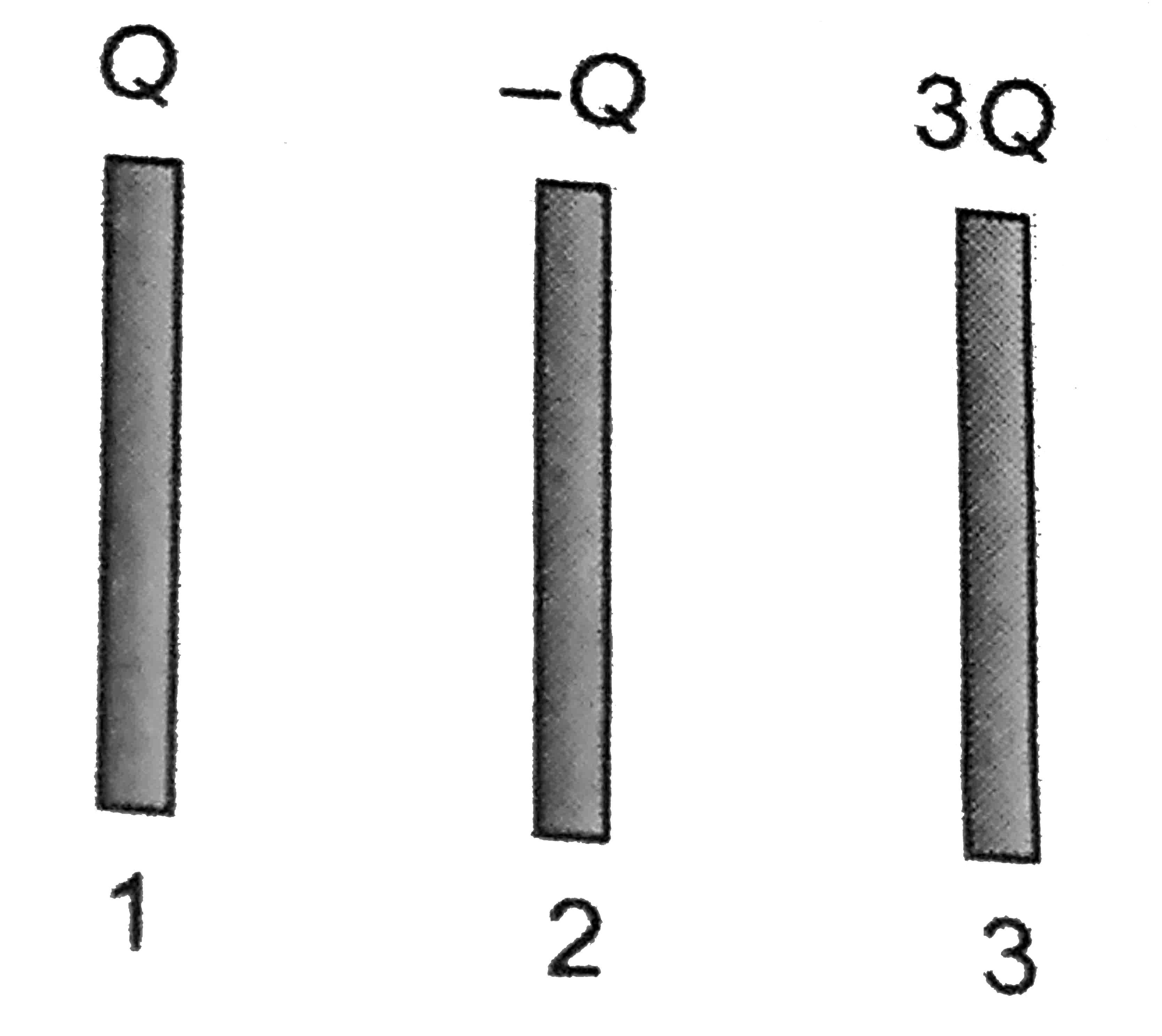
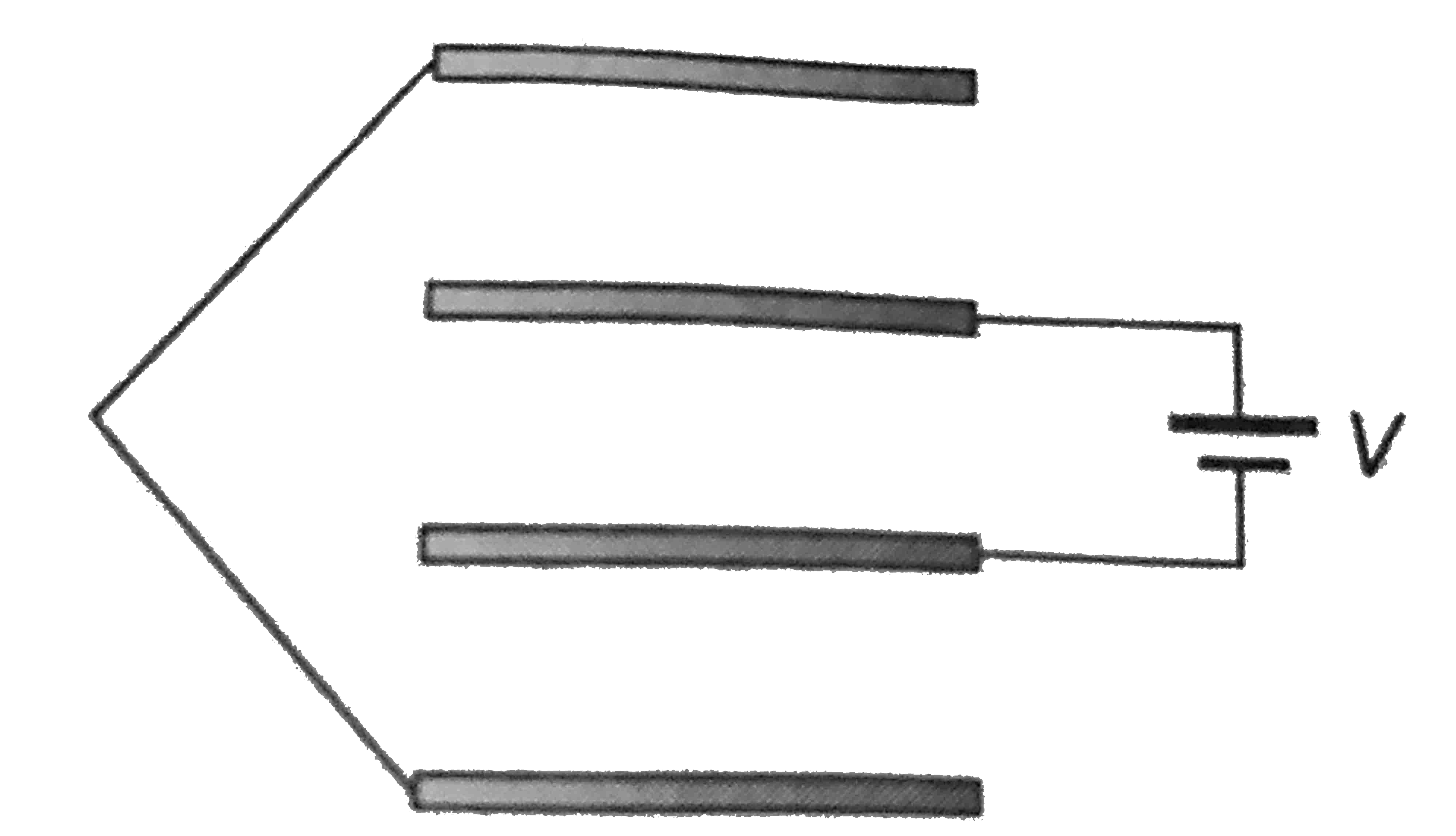
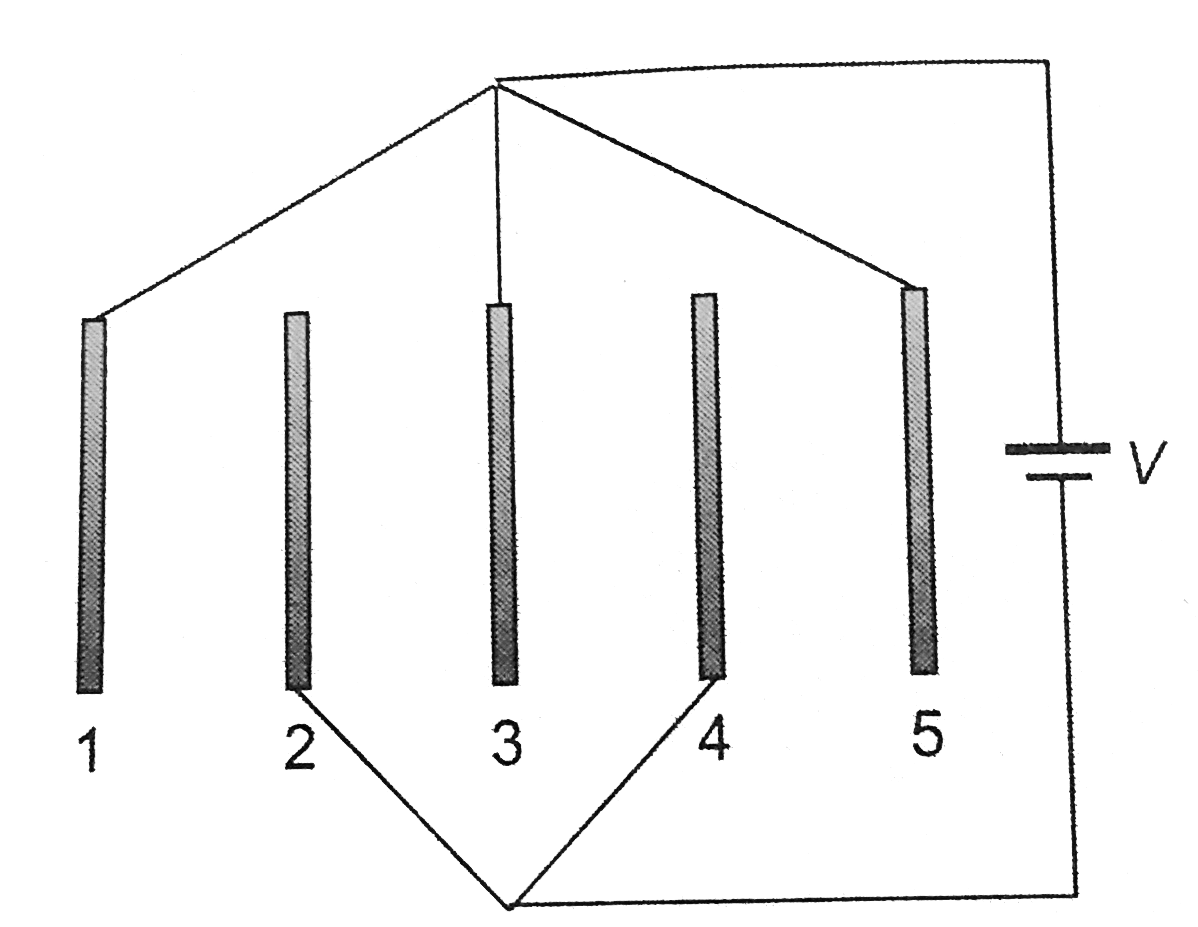
View SolutionA charged particle of m and charge Q has acquired a certain velocity by passing through a potential di Iierence Uo. With this velocity it flies into the field of a parallel-plate capacitor, with the distance between the plates being L, the potential di fference bei ng U. The velocity of the particle is directed parallel to the plates. Where should the magnetic field that makes the particle move along a straight line in the capacitor be directed and what should its value be (the induction B) ?
View SolutionA nonconducting disk of radius a and uniform positive surface charge density σ is placed on the ground, with its axis vertical. A particle of mass m and positive charge q is dropped, along the axis of the disk, from a height H with zero initial velocity. The particle has q/m=4ε0g/σ.
(i) Find the value of H if the particle just reaches the disk.
(ii) Sketch the potential energy of the particle as a function of its height and find its equilibrium position.
View SolutionOnly circular part of the wire shown in the figure has resistance sigam per unit length. The radii of the circles are r and R and ∠POQ=α (in radian). If a potential difference VP−VQ=V is applied across the point P and Q, the magnetic field at point O is
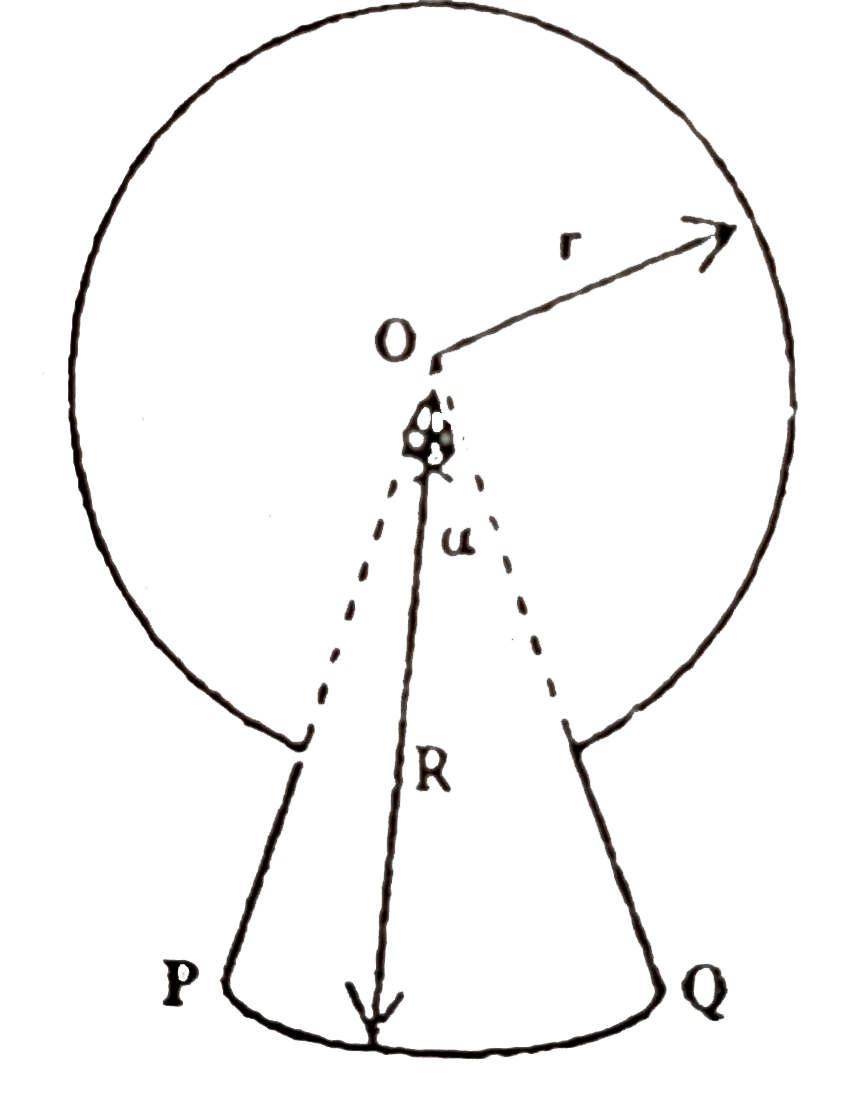
View Solution
